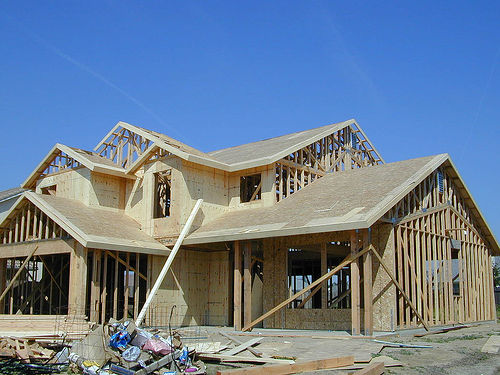Economy Watch: Starts Up, Foreclosures Down
The homebuilding industry might be gloomy, but housing starts increased in May by 3.5 percent compared with April, according to the U.S. Department of Commerce, to an annualized rate of 560,000 units.
June 17, 2011
By Dees Stribling, Contributing Editor
The homebuilding industry might be gloomy, but still housing starts increased in May by 3.5 percent compared with April, according to the U.S. Department of Commerce, to an annualized rate of 560,000 units. The single-family component of the market grew at roughly that rate, coming in 3.7 percent higher than the previous month. Multifamily starts were up, too: 2.9 percent month-over-month.
Moreover, new permits for residential properties gained 8.7 percent since last month. That puts permitting at an annualized rate of 612,000, the highest rate so far this year.
No one in the residential real estate business is celebrating, however. One month doesn’t a recovery make, especially considering the mass of foreclosures still working its way through the market like a rodent being swallowed by a snake, and the reluctance of lenders to lend.
Foreclosures Filings Down, But Not Because of Healthy Markets
RealtyTrac reported on Thursday that residential foreclosure filings—default notices, scheduled auctions and bank repossessions—dropped 2 percent in May compared with April. Year-over-year, the number of filings was down a whopping 33 percent. One in every 605 U.S. housing units received a foreclosure filing during the month of May 2011.
The reasons for the decline isn’t that fewer borrowers are missing their payments, as pleasant as that would be. Instead, banks can’t keep with the process of foreclosure. “Activity spiked in May for various stages of the foreclosure process in some states, a pattern that has occurred in several states over the past few months,” noted RealtyTrac CEO James J. Saccacio in a statement. “This pattern provides evidence that lenders are somewhat unevenly pushing batches of bad loans through foreclosure as they overhaul their paperwork and documentation procedures and as they determine that some local markets are able to absorb more foreclosure inventory.”
Many markets aren’t able to absorb REO properties. The nationwide inventory of unsold bank-owned houses increased in April and May, even as new REO activity slowed in both of those months.
Jobless Claims See Downtick
Another upside surprise on Thursday was U.S. initial jobless claims, with the U.S. Department reporting on Thursday that the week ending June 11 saw 414,000 new claims, a decrease of 16,000 from the previous week’s revised figure of 430,000, and less than expected. The four-week moving average was unchanged from the previous week’s revised average of 424,750.
Wall Street, which had been headed for another losing day on Thursday, managed to end mixed because the relatively good news that emerged during the day. The Dow Jones Industrial Average managed a gain of 64.25 points, or 0.54 percent, while the S&P 500 was up 0.18 percent. The Nasdaq lost 0.29 percent.








You must be logged in to post a comment.